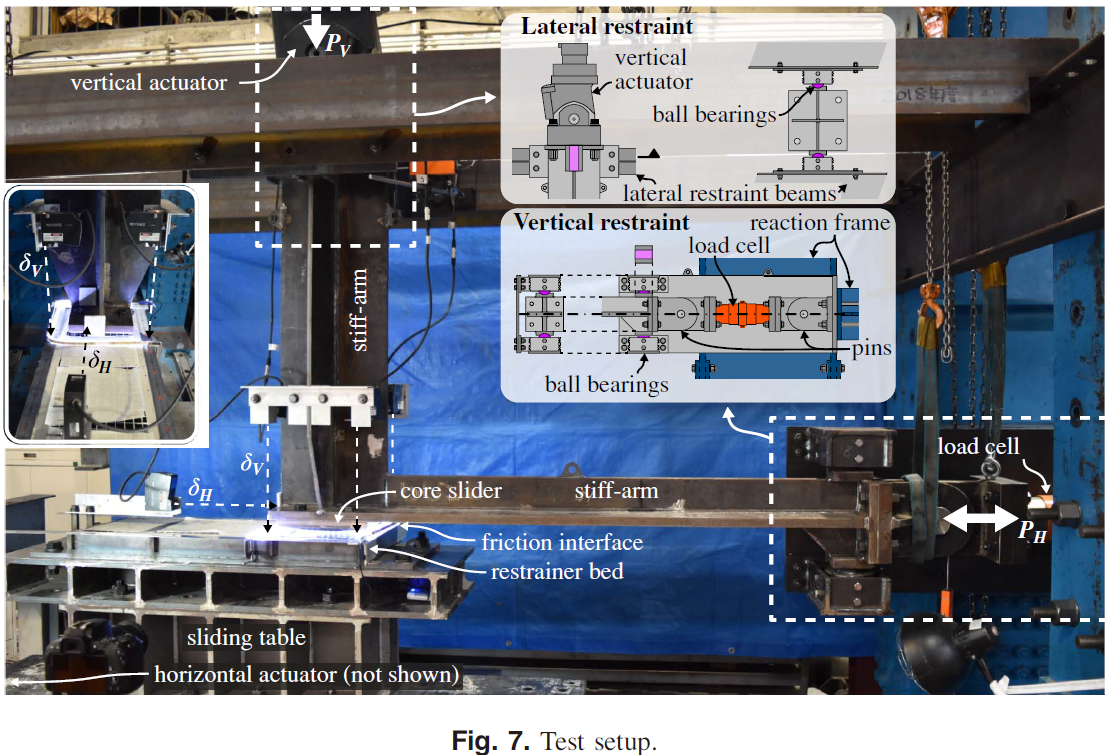本研究では,座屈拘束ブレースの芯材と緩衝材の間に生じる摩擦係数を測定し、接触問題に使用する評価モデルを提案しました。鉛直アクチュエータが何度も暴走する極めて骨の折れる実験でした。ASCE論文ですがオープンアクセスにしてあります。論文はこちら
The friction behavior of mortar–polymer–steel debonding interfaces was experimentally investigated to support numerical simulation of buckling-restrained braces (BRBs). Characteristic contact and slip demands were developed using two-dimensional Abaqus models to inform a full-scale test program. A stabilized dynamic friction coefficient of 0.065 was observed for reciprocating two-way sliding at the reference bearing pressure (20 MPa), slip amplitude (±20 mm), and velocity (30 mm/s) but increased to 0.16 at low bearing pressures and reduced to 0.03 for quasi-static loading. A recurring 40% dynamic amplification was observed in each one-way sliding cycle, where contact was only applied in one direction of the reciprocating motion, replicating the actual condition of BRB wavecrests. A system wear effect was also observed where small patches of mortar were exposed and then resurfaced, increasing the smeared friction coefficient by up to 0.15. Finally, the compressible debonding gap closely matched the polymer thickness, excluding textile backing, if present. A nonlinear friction model dependent on pressure–velocity–distance was developed, and recommendations were made to improve common testing provisions.
